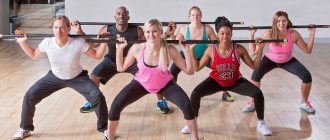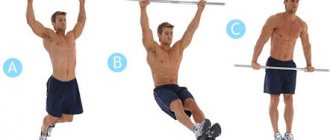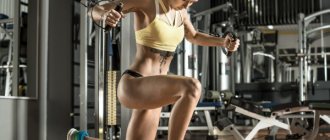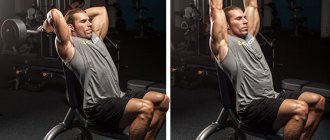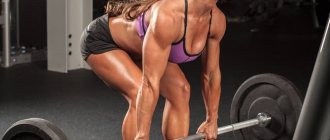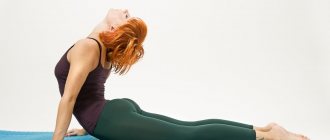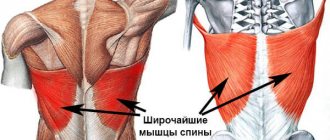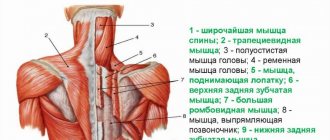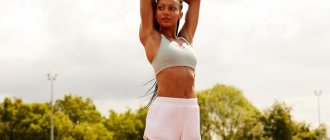What is osteochondrosis?
Osteochondrosis is a chronic disease that affects the cartilage tissue of the intervertebral discs. It can be cervical, thoracic and lumbar, depending on location. Lumbar osteochondrosis is the most common. But the most difficult is the complex lesion, which is difficult to treat.
The disease has four stages:
| First stage | involves mild symptoms, the patient feels a general malaise, often attributing it to other diseases. |
| Second stage | accompanied by severe pain, the cartilage tissue in the spine begins to deteriorate. Symptoms bring discomfort, and the person consults a doctor. |
| Third stage | suggests more serious changes in the spine, a hump or curvature occurs. |
| Fourth and final stage | these are irreversible changes. A person can feel severe pain even with minimal movements. |
With osteochondrosis, irreversible changes occur in the spine
The sooner you identify and begin to treat osteochondrosis, the easier it will be to do this. Therapy must be comprehensive. It usually includes special therapeutic exercises.
The value of exercise therapy with a stick for osteochondrosis
Exercises are primarily aimed at strengthening and developing the muscular system, improving blood circulation.
Using a special stick makes it easier for the patient to perform the exercises. This is due to the redistribution of the load - part of it goes to the stick . It also makes it possible to diversify therapeutic training.
A stick is a universal general developmental equipment that can be purchased in any specialized stores.
It has the following effect:
- helps relax the muscles of the affected areas;
- general developmental exercises with its use help prepare for more serious loads;
- can be used for preventive purposes.
Back leg raise
This exercise helps strengthen the buttocks and lower back muscles that are important for maintaining balance.
1. Stand next to a table or chair with your feet shoulder-width apart. 2. Lean forward slightly towards the support, holding onto it with your hands. 3. Slowly lift one leg back without bending your knee and pointing your toes out. 4. Stay in this position for one second, then slowly lower your leg to the floor. 5. Repeat with the other leg. Perform the exercise 8-10 times. Use ankle weights if necessary. Gymnastics for the elderly
The physical activity of older people differs from what they had in their youth and adulthood. Expert Marina Makarova shows simple exercises that you need to do to maintain mobility.
When can you use the exercises?
Exercises are contraindicated during the acute stage. It is recommended to perform them in chronic forms of the pathology, subject to stable remission. They can also be useful during the rehabilitation of patients after conservative or surgical therapy. .
They are often combined with massage . Gymnastics is also useful for preventing problems with the spine. But despite all the benefits of exercise, it is important that they are approved by a doctor.
The following contraindications for performing exercises are identified::
Exercise therapy should not be done during the acute period of any disease. An acute form of osteochondrosis or an exacerbation of a chronic one.- Acute infectious diseases;
- Myocardial infarction.
- The presence of benign or malignant tumors.
- Cardiac and aortic aneurysm.
- Threat of bleeding.
- Arrhythmia and tachycardia.
- Arterial hypertension.
- Myopia, in which pathological processes occur in the fundus area.
- Diabetes.
Prevention of poor posture
Poor posture - slouching - is not a harmless loss of beautiful body position. In children, stooping often appears during periods of active growth - at 6-7 years and at 11-12. Muscles and ligaments cannot keep up with the rapid growth of the skeleton, so postural problems may develop during these years.
In adults, posture deteriorates as a result of aging, due to weakening of muscles and ligaments, and diseases of the legs and spine. What can help at any age:
- Performing special sets of exercises to improve posture, including with a stick.
- Strengthening physical activity - hiking, skiing, running, fitness classes. Yoga can help strengthen your back for adults.
- Massage and other physiotherapy procedures that increase blood supply to muscles.
- Wearing special posture correctors.
- Swimming is considered a universal means of improving posture and promoting health in general.
- A comfortable workplace for long-term work in one position, taking into account growth.
- Refusal to constantly carry heavy bags on your shoulder or in your hand.
When leaving the room for a long walk, it is useful to stand with your back to the wall, fix the straight position of your body in memory and maintain it while moving.
Exercises with a stick for osteochondrosis
Did you know that...
Next fact
It is recommended to start exercises with a short warm-up . In this regard, walking in place with high knees is ideal for the spine. This allows you to use a large number of muscle groups and activate breathing.
To warm up, you can use the simplest exercises. Devote at least ten minutes to it. First, the upper body is worked out, and gradually you need to go lower. Warm-up can be universal or special.
Its universal version is suitable for any load and involves exercises known to everyone from school: turns, bends, then alternately working the shoulders, arms, body, hips, knees, ankle joints. At the end, breathing exercises are done. Special stretches involve warming up muscle groups that will be maximally involved during exercise.
After devoting 10-15 minutes to a simple warm-up , take a stick and start doing the exercises. There are a large number of complexes.
For cervical osteochondrosis
If we are talking about damage to the cervical spine, then basic exercises can be as follows:
Read more about the technique of performing exercises with a stick for the cervical region. Take a standing position, place your feet shoulder-width apart. Hold the stick with your arms extended forward and perform rotational movements in different directions 10-12 times.- In the same position, hold the stick in your hands, trying to grasp the ends of the projectile. Make a so-called “propeller”. Alternately bringing the stick from horizontal to vertical position. Repeat 10-12 times.
- Similar situation. This exercise is related to breathing, so the frequency should be adjusted by a doctor or instructor. When you take a deep breath, you need to raise your outstretched arms with the stick up, and lower them as you exhale. Repeat 4-6 times.
- Starting position - standing, stick in raised hands. As you inhale, bend your body at the waist, touching the floor with the stick. As you exhale, return to the starting position. Repeat 5-7 times.
Video: “Exercises for the cervicothoracic region”
For thoracic osteochondrosis
There are effective sets of exercises for patients with thoracic osteochondrosis . But they can also be used to damage other parts, be it cervical or lumbar.
The first complex is carried out without a gymnastic stick . Its approximate sequence is as follows:
- Take a standing position, tighten your stomach, straighten your lower back, raise your arms up to your sides, and then move them behind your back. The further you can do this, the better. Make sure your abdominal muscles are always toned.
- Place your hands behind your head, clasp them with your elbows in front of you. Then lift them up and down through the sides.
- Raise your arms above your head. Lower them and place them behind your back as far as possible.
These actions can be connected together and performed in a chain. Each element is executed ten times. The complex promotes the development of antagonist muscles.
The first complex for thoracic osteochondrosis must be carried out without a gymnastic stick
The second lesson is carried out using a gymnastic stick . The main exercises will be as follows:
- Raise the stick up, then lower it in front of you and place it behind your head, trying to lower it to the lumbar region. The distance between your hands on the stick should be as wide as possible. The smaller it is, the harder the exercises will be.
- Raise the stick behind your back, move your arms further away from your body and bend forward so that your abdominal muscles are tightened.
- The next action is to rotate the stick with crossed arms. As you do this, you should feel tension between your shoulder blades.
- Move your straight arm together with the stick first in one direction and then in the other direction.
Video: “General exercises with a stick”
For lumbar osteochondrosis
With lumbar osteochondrosis, there are also complexes both with and without a stick . To begin with, the following simple gymnastics is recommended:
- Lie down, slightly raise your legs above the surface and fix them in this position for a few seconds.
- While lying down, perform the “scissors” exercise, that is, raise your legs and cross them, swinging to the sides.
- The “bicycle” exercise helps. Bend your knees and perform movements that imitate pedaling.
This is followed by exercises with a stick . First, stand up, place your feet slightly wider than shoulder-width apart, take a stick and rotate to the sides. Then lift it above your head and bend in all four directions alternately. Then lie on your stomach, take the instrument in your hands, press your stomach to the floor, stretch out your upper and lower limbs and try to imitate the movement of a boat with them.
Several exercises for the lumbar spine
Exercises with a stick are quite simple, however, in order for them to be safe and effective, you need to take into account a number of rules. First, you need to consult with your doctor, who should determine the optimal level of exercise for you. This is especially important for cervical osteochondrosis. The specialist must take into account the stage of the disease .
Video: “Exercises to improve posture”
Pay attention to several other sets of exercises for osteochondrosis:
- How to perform therapeutic exercises for osteochondrosis in the lumbar region?
- You can read about exercise therapy exercises for the neck for osteochondrosis here
- The basis of diets and nutrition for osteochondrosis of the cervical spine
- You will find how to perform a set of exercises for the treatment of osteochondrosis of the thoracic region on the page
- You will learn about the principles of gymnastics for osteochondrosis of the neck using Shishonin’s method at the link
There are also general rules to follow:
- The room in which classes will be held must be well ventilated.
- Before classes, take a shower and put on clean clothes that do not restrict movement. It is better if it is made from natural materials.
- Shoes should be comfortable and light.
- It is important that nothing distracts or irritates you during the training process - too bright light or extraneous sounds.
- Classes should be conducted smoothly. Sudden movements are excluded.
- Begin each exercise by measuring your heart rate and blood pressure. The same should be done after exercise - with osteochondrosis, it is important to monitor these indicators.
- Loads need to be increased gradually.
- If you feel pain while doing the exercises, stop exercising.
- The treated complex must be performed every day.
- Exercises should only be performed with a doctor's permission. Do not change the load yourself.
Learning the correct grip
A gymnastic stick allows you to make your usual exercises a little more difficult
.
Firstly, it works as a weighting agent
.
Secondly, it allows you to perform more complex movements, as it has an inertial effect on muscles and joints. The simplest grip
of a stick is “cylindrical”.
In this case, the stick is taken with the palm on top. This is one of the first grips a person develops. Small children grab an adult's finger in the same way. You can take the stick with an underhand grip
(palm facing away from you), by the middle (palm facing you) or by the ends.
In the latter case, the end edges of the stick end up in the palms. In addition, you can not only hold the stick in your hand, but also place it on the floor to use it as a support
.
